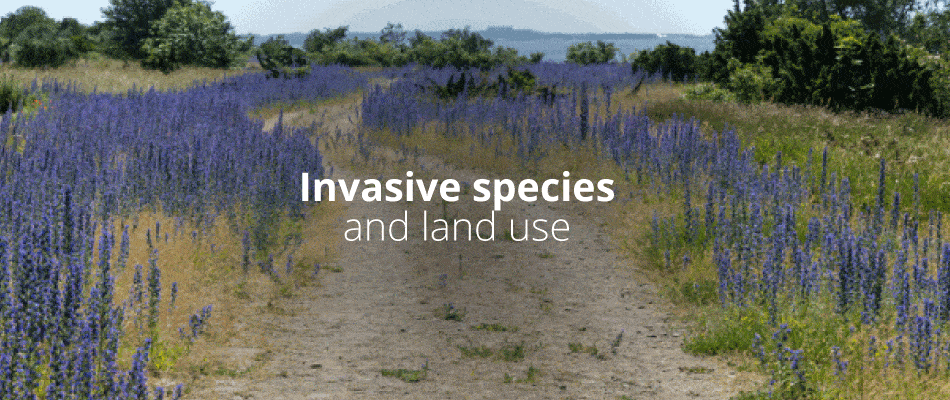Updated June 6, 2020 with the latest Federation of Canadian Municipalities’ National Measures Report.
A wave of ideas for climate change adaptation and mitigation has followed the release of the special report, Global Warming of 1.5˚ C by the IPCC. The report, which was released in October 2018, outlines the pathways to and impacts of a global warming increase of 1.5˚C. Although the impacts of a 1.5˚C increase above pre-industrial levels are not as severe as a 2.0˚C increase, there are still risks of extreme changes or damage to ecosystems.
Approaches to avoid, adapt or mitigate to climate change are being discussed around the world. By considering the high-level purpose, use and functioning of entire regions, land use planning is a tool that can help local communities reduce their contributions to and impacts from climate change.
The difference between mitigation and adaptation
Responding to the impacts of climate change require a two-pronged approach:
- Reduce emissions of greenhouse gases (mitigation)
- Adapt to the impacts of climate change (adaptation)
The Canadian Institute of Planners published a model standard of practice for climate change planning for Canadian municipalities that calls on planners to start action on climate change mitigation and adaptation today. Both approaches are vital in limiting the harms of climate change on both the local and global community.
| Mitigation | Adaptation | |
| Motivation | Self interest
Ethical responsibility |
Self interest |
| Actions | From local to global | Local |
| Impacts | Global | Local |
| Challenges | Status quo | Uncertainty
Capacity |
(From the Model Standard of Practice for Climate Change Planning by the Canadian Institute of Planner)
7 land use planning tools for local adaptation
Municipalities have seven tools they can use to improve their community’s adaptation to climate change. These tools are outlined by a Natural Resources Canada report from 2012, Land use planning tools for local adaptation to climate change. The report was created to outline best practices to manage the risks of climate change, noting that “land use planning is one of the most effective processes to facilitate local adaptation to climate change.”
1. Official planning documents
Comprehensive and mandatory planning documents set out the long-term vision for communities. These plans, such as master or community development plans, guide future decisions and development according to the goals for the region. Incorporate climate change adaptation within the planning documents by:
- Listing the opportunities and risks associated with climate change in the local region
- Listing the adaptation needs and corresponding strategies
- Prioritizing the adaptation needs and creating an adaptation action plan
- Completing a risk assessment for climate change on municipal operations
- Researching economic, social or environmental information relevant to the community’s climate change adaptation
These components can be integrated throughout planning documents or reside in a section dedicated to climate change adaptation.
2. Plans on special topics
Expand on the official planning documents with special plans that focus on a particular topic. These topics can be identified by prioritizing the opportunities and risks of climate change adaptation based on these types of topics:
- Regional (target a specific community or region within a municipality)
- Subject (such as transportation, water management or urban forestry)
- Local issues (such as topics pertaining to community, economic or social priorities)
The special plans can review the impacts of climate change and address any approaches to adaptation. As a supplement to official planning document, special plans can be created in a manner similar to official plans (including comprehensive engagement and approvals) but are not limited to the scope or broadness of official long-range plans.
3. Zoning
Moving from planning to action, zoning is a practical tool to manage potential risks or opportunities from climate change adaptation. A classic example of zoning for climate change adaptation is limiting coastal development to reduce the impacts of sea level rising. In Alberta, preventative zoning could prohibit development in areas subject to higher risk for fires, flooding or other extreme weather events.
4. Project-based development management
On the neighbourhood scale, project-based development tools (such as subdivision control and development permits) address climate change adaptation on a small scale. For example, this approach would request developers to incorporate a setback from a water body to reduce potential damage from flooding. This approach is similar to zoning, but addresses issues on a smaller scale.
5. Easements
Easements are permanent restrictions on the use of land, even if the land is sold to another owner. For climate change adaptation, easements can be used for wildlife conservation, managing the development according to climate change adaptation goals, for the use of public utilities or public access to another piece of land. Easements are both permanent and localized, so they can be effective tools for long-term adaptation.
6. Guidelines for design
Design guidelines can be useful to promote energy efficiency in all types of buildings. Energy management and efficiency is specialized for local regions and technologies, so design guidelines created by local communities best represents effective and realistic strategies for reducing energy consumption. Design guidelines can also be used for transportation or utility infrastructure to unify approaches throughout a municipality.
7. Environmental assessments
Formal reviews of projects or plans according to an environmental assessment framework can identify gaps or opportunities for climate change adaptation.
How to manage, mitigate and adapt to climate change
Creating a dedicated climate change policy or integrating a climate change into master plans is the first step to guide future land use decisions. But what action can actually be a achieved to reduce greenhouse gases and respond to the impacts of climate change?
The Canadian Institute of Planners identified strategies in the following categories for municipalities to mitigate and adapt to climate change:
Growth management
- Increase intensification and density
- Develop compact and mixed-use communities
- Support communities with effective transit systems
Transportation
- Promote sustainable and active modes of transportation (carpooling, transit, walking, cycling)
Energy
- Reduce energy consumption through energy efficiency and conservation
- Increase renewable and district energy sources
- Find opportunities to use waste before final disposal
Water
- Use watershed/sub-watershed planning to protect water resources
- Analyze risk of public infrastructure to water resources before development
Natural hazards
- Improve resilience for potential natural hazards, including impacts to surface water, groundwater, stormwater and flooding
- Develop low-impact and green infrastructure
Natural heritage
- Protect, maintain, restore and enhance natural features
- Improve the diversity and connectivity of natural features
Agriculture
- Improve the economic viability of farming by identifying and protecting land that is most suitable for agriculture
Other province’s approaches
Canadian provinces have compiled their approaches to creating resilient and sustainable communities in guides and strategies for land use planners.
Manitoba
The Manitoba government created Climate Change Adaptation through Land Use Planning as a resource for municipal planning staff to respond to local impacts of climate change. As identified by Manitoba Conservation, the potential and anticipated effects of climate change to the province include:
- Reduced or variable water supply
- Potential for droughts and extreme weather events
- Challenges to polar bears due to thinning ice
- Impacts to the boreal forest from fires and insect outbreaks
- Reduced duration of winter roads
Using land use planning to adapt to climate change requires a comprehensive vulnerability and risk assessment. The process for an assessment is:
- Identify the potential impacts on a local region
- Determine the risks, vulnerabilities or opportunities associated to the impacts
- Incorporate the risks, vulnerabilities or opportunities within all stages of land use planning
All types of plans and planning process can address climate change. Aligning the goals or functions of plans and processes with regional vulnerability and risk assessments contributes to the long-term mitigation and adaptation to climate change at the local level.
Ontario
A 2016 report for the Ontario Ministry of Environment and Climate Change outlines the best practices to apply land use planning for achieving climate objectives. The report, Research and Information Gathering on climate Change Mitigation and Adaptation, is available from the Ontario Climate Consortium, a group of researchers and professionals that collaborate to address climate change issues.
The land use tools identified range in terms of scale, projected impacts and ease of implenetation.
| Framing | Official plans
Local plans on special topics/regions Collaboration and consultation |
| Regulatory and zoning | Subdivisions and development controls
Regulation for flooding and hazards Limit impervious surfaces Site specific development permits Water management and energy efficiency Impact assessments Bylaws requiring green infrastructure Tree protection |
| Taxes and charges | Development cost charges/exemptions
Stormwater user fees |
| Voluntary | Density bonuses
Covenants and easements |
| Information | Landscaping and runoff water controls
Design guidelines |
| Liability | Environmental review of projects |
| Compulsory Acquisition | Purchase, designation or acquisition of properties |
To complement the proposed strategies, the report outlines barriers to implementation.
Lack of information: A baseline of information is required to identify the natural assets within a region and the effective strategies that could contribute to mitigating or adapting to climate change.
Public opinion: Changes to communities can be opposed by the residents that live, work or travel through.
Uncertainty on the best tools/strategies: Even if the impacts are identified, the next steps are not always clear.
Fragmented decision making: A comprehensive strategy requires the commitment from various government departments extending through the three levels of government.
2019 Canadian City Climate Update
The Federation of Canadian Municipalities released a report on the top actions taken by Canadian municipalities on climate action. This report, National Measures Report 2019, includes highlights and case studies on the policies, programs and investments that Canadian municipalities made into climate action
Download the 2019 National Measures Report.
Ongoing learning and research
These resources are among the first that address climate change mitigation and adaption through land use planning. As more Canadian municipalities apply climate change plans, policies and approaches into their ongoing decision making, more research and tools will be explored.




Recent Comments